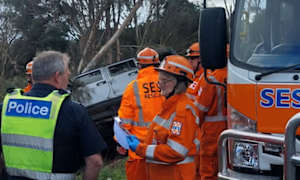THE FOUNDATION for Rural & Regional Renewal (FRRR) recently ran a program with Korumburra to strengthen their capacity to respond to disasters and disruptions.
The Disaster Resilient: Future Ready (DR:FR) Victoria program is a multi-year, place-based initiative designed to support and strengthen the capacity and capability of remote, rural and regional communities to thrive and be resilient to the impacts of climate change, disasters and other disruptions.
The Victorian program, which ran from 2022 to 2025, saw FRRR partner with the Korumburra Staying Strong group and two other Victorian towns.
A recent report released by FRRR confirmed the value of community-led approaches to disaster preparedness and resilience.
Nina O’Brien, FRRR’s Disaster Resilience & Recovery Lead, said that through experience as a national funder of community-based efforts in medium to long term disaster recovery, FRRR observed communities with stronger social capital, higher levels of inclusion, diverse leadership and broad engagement across community and emergency management system, recovered more effectively after a disaster.
“We wanted to better understand what had led them to be in that position. What did it take to enable community-led approaches that responded to each place’s unique context, so that recovery involved less disruption, and people and communities were more informed, skilled and connected for future challenges? And so, DR:FR was born.”
The program involves a series of collaborative workshops with community groups, with ongoing support and guidance from FRRR staff and, initially, external coaches, with grants awarded to support the activation of community-driven, resilience-building ideas.
As part of the program, researchers from the University of Sydney also regularly engaged with the community groups to investigate, understand and measure activities, processes and structures that enable or hinder individuals and communities in disaster resilience building.
In addition to structured interviews and community conversations, as well as participating in community meetings and workshops, researchers mapped the seven dimensions of community led resilience building at multiple points throughout the project.
“This research has confirmed the power of community-led approaches to disaster resilience and highlighted some key enabling factors,” Ms O’Brien explained.
“Perhaps most important of all the factors is having a group of people who are willing to step up and play a key role working closely with authorities and agencies to strengthen their community for the future. It is the members of these groups that are the key enablers. Their strong commitment to their communities, inspired us throughout this program.
“This research has proven yet again that by working closely together, and with the right support, communities can build their capacity to respond to disasters and disruptions in ways that are sustainable and impactful.”










